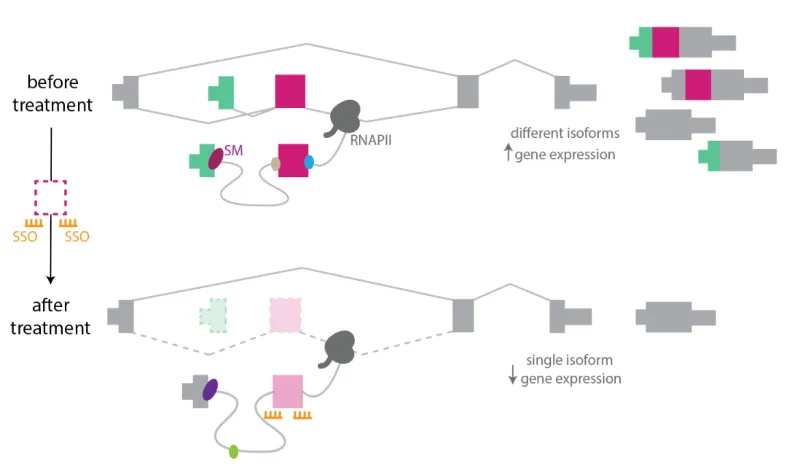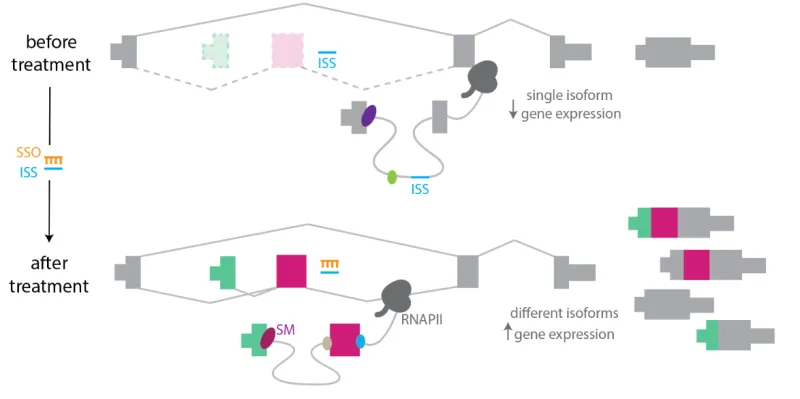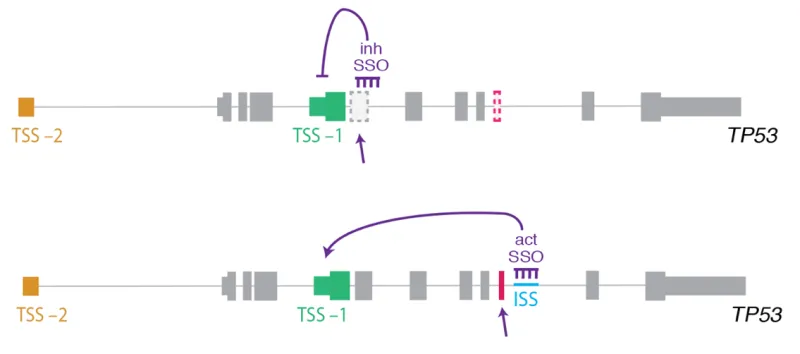Splicing-Dependent Transcriptional Gene Silencing or Activation
A method to activate or inhibit genes at the transcriptional level by targeting pre-mRNA splicing processes. This technology can be used to boost expression of a gene or specific isoforms of a gene that are protective from a particular disease, or alternatively to inhibit overexpressed or mutated genes that cause disease.
Researchers
-
splicing-dependent transcriptional gene silencing or activation
United States of America | Published application -
splicing-dependent transcriptional gene silencing or activation
United States of America | Granted | 11,572,560
Figures
Technology
The invention is the first technology to control usage of alternative promoters to enhance or inhibit specific sites of alternative transcriptional initiation through influencing mRNA alternative splicing:
- Inhibits transcription from proximal promoters by inhibiting the splicing site of an internal exon (defined by any exon other than the first or last of the gene) and thus reducing total gene expression
- Activates transcription from proximal promoters by enhancing the inclusion of an alternative internal exon and thus increasing total gene expression
- Activates transcription by reversing inhibition caused by Intronic Splicing Silencer (ISS) elements
- Activates transcription by creating a new 3’ splicing site that promotes the inclusion of an internal exon and transcription from nearby cryptic promoters, thereby increasing gene expression
Problem Addressed
Many diseases including cancer, autoimmunity, cardiovascular disease, obesity, diabetes, and neurological disorders can arise from the mis-regulation of gene expression. The invention is a novel method to modulate up or down the expression levels of a gene, or a specific mRNA isoform of interest, by stimulating the use of a proximal promoter located upstream of a skipped exon through local recruitment of splicing machinery and general transcription factor complexes, without the need for any changes to the cell’s genomic DNA.
Advantages
- Potently activate or inhibit genes – modulate gene expression at the transcription level, resulting in more complete activation or inhibition than typically occurs from modulating post-transcriptional processes
- Can simultaneously activate and inhibit genes – can introduce multiple SSO to inactivate genes that cause disease and activate genes whose increased expression would be protective from a particular disease at the same time
- Not bulky or immunogenic – use of small molecules and SSO to manipulate splicing sites
- Fine spatial control – manipulate splicing sites to control gene expression of different mRNA isoforms
Publications
Ana Fiszbein, et al. Exon-Mediated Activation of Transcription Starts. Cell. 2019 Dec 12. doi: 10.1016/j.cell.2019.11.002
License this technology
Interested in this technology? Connect with our experienced licensing team to initiate the process.
Sign up for technology updates
Sign up now to receive the latest updates on cutting-edge technologies and innovations.


